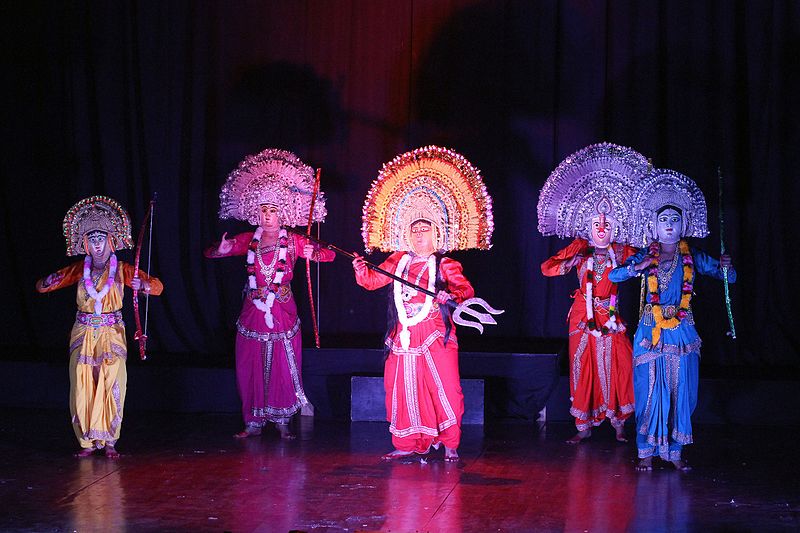Chhau dance | Purulia Chhau | Mayurbhanj Chhau | Seraikella Chhau

Chhau dance is a semi-classical Indian dance with martial, tribal, and folk origins and is popular in the Indian states of Odisha, Jharkhand, and West Bengal.
It is believed by some modern scholars that the word Chhau is derived from Sanskrit Chaya (shadow, image, or mask), but according to Sitakant Mahapatra, it is derived from Chhauni (military camp, armor, stealth) in Odia language.
There are three district forms of Chhau named after the location where they are performed. 1. Seraikella Chhau of Jharkhand 2. Mayurbhanj Chhau of Orissa 3. Purulia Chhau of West BengalFeatures of Chhau Dance
Chhau dance has a significant role in the celebration of the spring festival Chaitra Parva, being innately connected to its rituals. It is a people’s art as it involves the entire community. Performed by male dancers from families of traditional artists, or those trained under Gurus or Ustads (masters).
It traces its origin to indigenous forms of dance and martial practices. Khel (mock combat techniques), chalis, and topkas (stylized gaits of birds and animals), and uflis (movements modeled on the daily chores of a village housewife) constitute the fundamental vocabulary of Chhau dance. The knowledge of dance, music, and mask-making is transmitted orally.
It is performed in an open space called akhada or asar and lasts through the night. The dancers perform a repertoire that explores a variety of subjects: local legends, folklore, and episodes from the epics of Ramayana/ Mahabharata and abstract themes.
The vibrant music is characterized by the rhythm of indigenous drums like the dhol, dhumsa, and kharka and the melody of the mohuri and shehnai.
Three styles of Chhau
The Seraikella ChhauThis dance form based on martial arts incorporates the Veera Rasa of the Indian dramatic spectrum. The Seraikella Chhau Dance is an art form, which combines popular appeal with sophistication.
The nature of the themes is similar to those of the classical dance forms, but it has permeated the rank and file of the people. The dances are usually vigorous.
The Purulia ChhauThis is a vibrant and vivid theatrical dance form. Commencing with an invocation to Lord Ganesh, its themes reflect the struggle between good and evil, with episodes drawn from the great Indian epics, the Ramayana and the Mahabharata, as well as from the Puranas.
Mask and elaborate characterize Chhau, as well as its acrobatic and powerful movement. The music of the dhol and shehnai ass to its energy.
The Mayurbhanj ChhauThe Mayurbhanj Chhau dance is primarily maskless and renowned for its ‘Taandava’ (vigorous) and ‘Laasya’ (soft) dance substance. This Chhau dance is essentially a ritual-based dance of Siva Gajan or Chaitra Parav.
This unique folk dance form is transmitted from generation to generation through precise training, regular practice, and endurance of oral tradition. The present article deals with the intangible aspects of this well-known folk dance, by narrating the origin and development, technique, mood, items, stages, themes, the composition of music, musical instrument, reasons for male dominance, and the new trends adopted within the format of Mayurbhanj Chhau dance.
